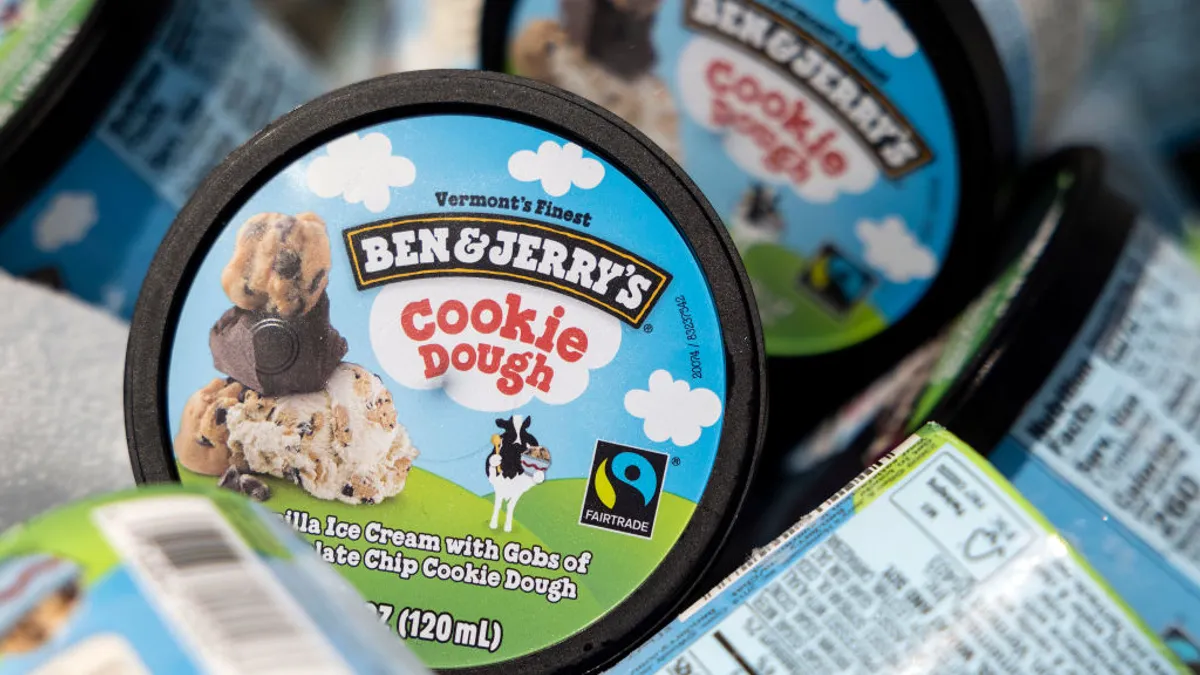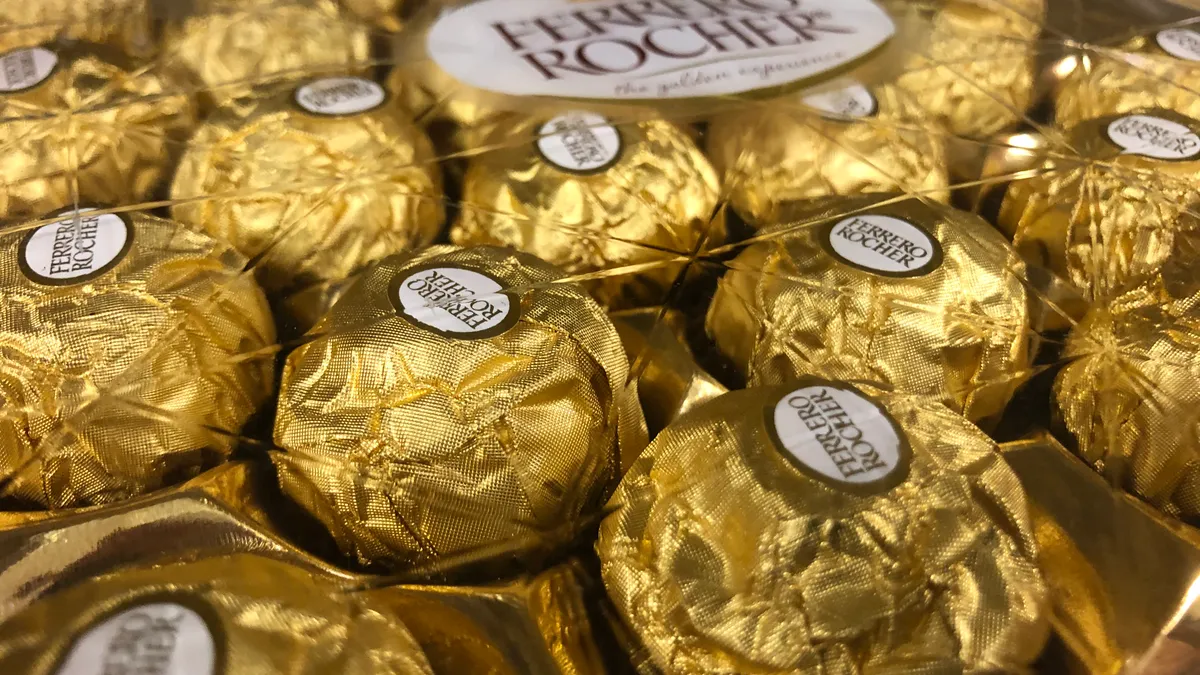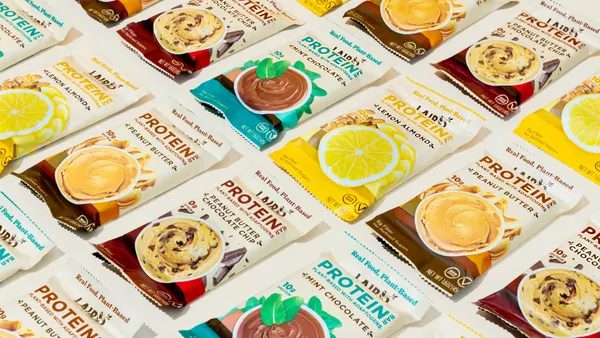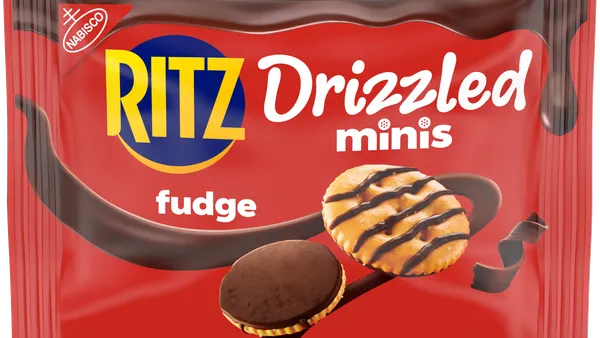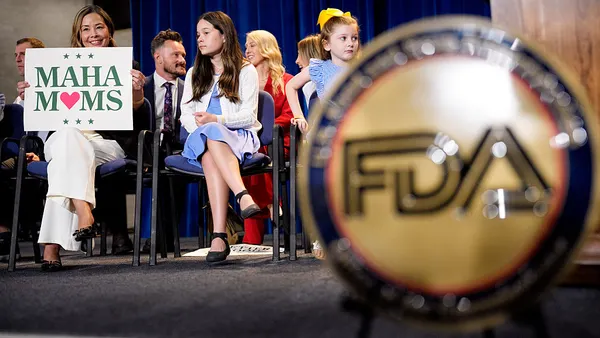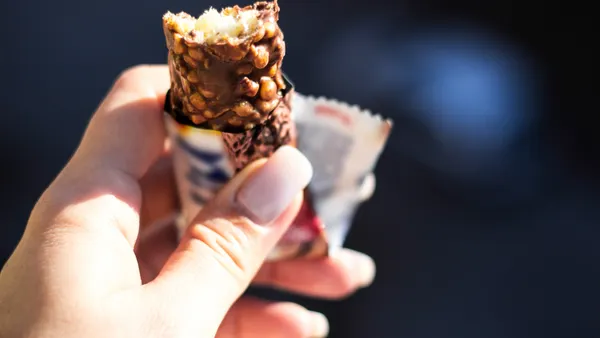Dive Brief:
-
Edible glitter has started turning up in foods such as bagels and pizza, perhaps spurred by the desire to make images stand out on Instagram, according to The Washington Post.
-
The trend started out in cake decorating before moving into drinks like beer, Prosecco and coffee, and eventually into foods. The Bagel Store released a glitter bagel, a London pub served glitter gravy with its Christmas dinners, and a restaurant in Santa Monica has created a rainbow glitter pizza.
-
Glitter intended for use in food is labeled “edible” and made from ingredients like cornstarch, sugar, food coloring and pearlescent mica-based pigments. It is not the same as non-toxic glitter, which is made from plastic.
Dive Insight:
There is some logic to adding actual sparkles to a drink like beer or Prosecco, or to sweet treats such as cupcakes and cookies, but glitter in savory foods seems more fanciful. Glitter has childlike associations, and is perhaps a natural follow-on from colorful “unicorn food”, which has been trending on social media. Even Starbucks joined in with a limited edition unicorn Frappuccino, and Kellogg recently released Unicorn Cereal at its New York City cafe.
As with the unicorn trend, it is likely that edible glitter has been driven by millennial consumers looking for ways to make their foods stand out on Instagram. Nearly one in three people across all age groups has bought a treat specifically to share a picture of it on social media – and that jumps to 52% of millennials, according to a Mars Wrigley report.
Still, long before Instagram, food has been made more exciting with whimsical decorations. Edible gold leaf has been used to decorate foods since at least the Middle Ages. Despite being flavorless (like edible glitter), gold leaf remains a popular way to add a touch of luxury to desserts, cocktails and savory dishes – even pizza. Even German company Esslack makes edible spray paint in blue, gold and silver, made entirely of ethanol and food dyes.
As manufacturers look for ways to make their products stand out in a crowded marketplace, edible glitter, gold leaf and other decorations are likely to remain a key part of the food lexicon. In these cases, the tasteless decoration is unlikely to attract a long-term customer but rather the immediate attention of a shopper who wants to try something a little different. Whether the trend for glitter has the staying power of gold leaf remains to be seen, one thing that is for certain is food manufacturers are going to keep looking for new ways to get consumers to buy their product.


